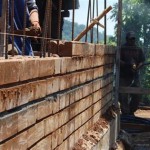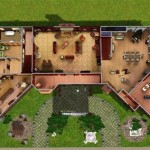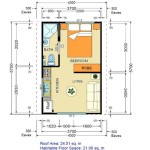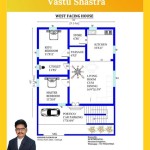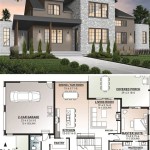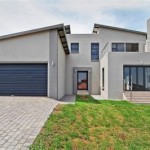Pool House Plan: A Comprehensive Guide
A well-designed pool house can significantly enhance the enjoyment and functionality of a backyard swimming pool. More than just a changing room, a pool house can serve as a gathering space, a guest suite, or even an outdoor kitchen. Careful planning is crucial to ensure the pool house meets specific needs and complements the existing landscape.
The first step in developing a pool house plan is determining its primary function. Will it primarily serve as a changing area and restroom? Will it house an outdoor kitchen and dining area? Perhaps it needs to function as a guest suite or a recreational space. Clearly defining the intended use will guide subsequent design decisions.
Size is another critical consideration. A small pool house might suffice for changing and storage, while a larger structure might be necessary to accommodate a kitchen, bar, and seating area. Available space in the backyard will naturally dictate the maximum footprint of the pool house. Local zoning regulations may also impose size restrictions.
Style is an essential element of any pool house plan. The design should harmonize with the architectural style of the main house and the surrounding landscape. Popular styles include traditional, modern, rustic, and Mediterranean. Materials such as wood, stone, brick, and stucco can be used to achieve the desired aesthetic.
Budget plays a vital role in shaping the pool house plan. Construction costs can vary significantly based on size, materials, and features. Establishing a realistic budget early in the planning process helps avoid cost overruns and ensures the project stays within financial constraints.
Essential features to consider when designing a pool house include changing rooms, restrooms, showers, and storage space for pool equipment and towels. Optional features might include an outdoor kitchen with a grill, refrigerator, and sink, a bar area, a fireplace or fire pit, and a covered patio or deck for entertaining. Careful consideration of these features will optimize the functionality and enjoyment of the pool house.
Layout is a crucial aspect of pool house design. The layout should facilitate efficient traffic flow and maximize the use of available space. Consider the placement of doors, windows, and interior walls to create a functional and aesthetically pleasing environment. Natural light and ventilation should also be prioritized.
Plumbing and electrical considerations are essential components of any pool house plan. Adequate plumbing is required for restrooms, showers, and potentially an outdoor kitchen. Electrical wiring is necessary for lighting, appliances, and entertainment systems. Consulting with qualified professionals is crucial to ensure these systems are installed safely and efficiently.
Building permits are typically required for pool house construction. Check with local authorities to determine the specific requirements and obtain the necessary permits before commencing construction. Failure to obtain the required permits can result in fines and delays.
Choosing the right builder is critical to the success of any pool house project. Look for experienced builders with a proven track record of quality construction. Obtain multiple bids and compare proposals carefully before making a decision. A reputable builder will provide a detailed contract outlining the scope of work, timeline, and payment schedule.
Landscaping around the pool house can enhance its aesthetic appeal and create a welcoming atmosphere. Consider incorporating plants, trees, and hardscaping elements such as walkways and patios to complement the pool house and create a cohesive outdoor living space.
Maintenance is an important consideration for any pool house. Regular cleaning and maintenance will help preserve the structure and ensure its longevity. Materials should be chosen for their durability and resistance to weathering. Proper ventilation is also crucial to prevent moisture buildup and mold growth.
Accessibility is an important factor to consider when designing a pool house. Ensure that the pool house is accessible to individuals with disabilities by incorporating features such as ramps, wider doorways, and accessible restrooms. Compliance with accessibility guidelines is not only ethically responsible but may also be required by local building codes.
Energy efficiency is an increasingly important consideration in building design. Incorporating energy-efficient features into the pool house plan can help reduce operating costs and minimize environmental impact. Consider using energy-efficient windows, insulation, and appliances. Solar panels can also be installed to generate renewable energy.
Security is another factor to consider, especially if the pool house will be used as a guest suite or contain valuable equipment. Installing security features such as locks, alarms, and security cameras can help deter theft and vandalism. Adequate lighting around the pool house can also enhance security.
Insurance is essential for protecting the investment in a pool house. Contact an insurance agent to discuss coverage options for the pool house and its contents. Ensure that the pool house is adequately insured against potential risks such as fire, theft, and natural disasters.
Proper planning and execution are essential for creating a functional and enjoyable pool house. By carefully considering the factors outlined above, individuals can develop a pool house plan that meets their specific needs and enhances their outdoor living experience.

Plan 006p 0004 Pool House Plans Bathroom Floor

Modern Pool House Plans Houseplans Blog Com

Floor Plan 062p 0007 Pool House Plans Designs

Pool House Irontown Homes

4 Stunning Pool House With Bar And Bathroom Plans Blog Eplans Com

Modern Pool House Plans Houseplans Blog Com

Simple Pool House Floor Plans Flooring Home Design Gallery 5nlkj7wxax Designs

Pool House Plans To Get You Started

Hanson Pool House Coastal Plans From Home

Pool House Plans Plan With Bar Grill 062p 0006 At Www Theprojectplan Com

